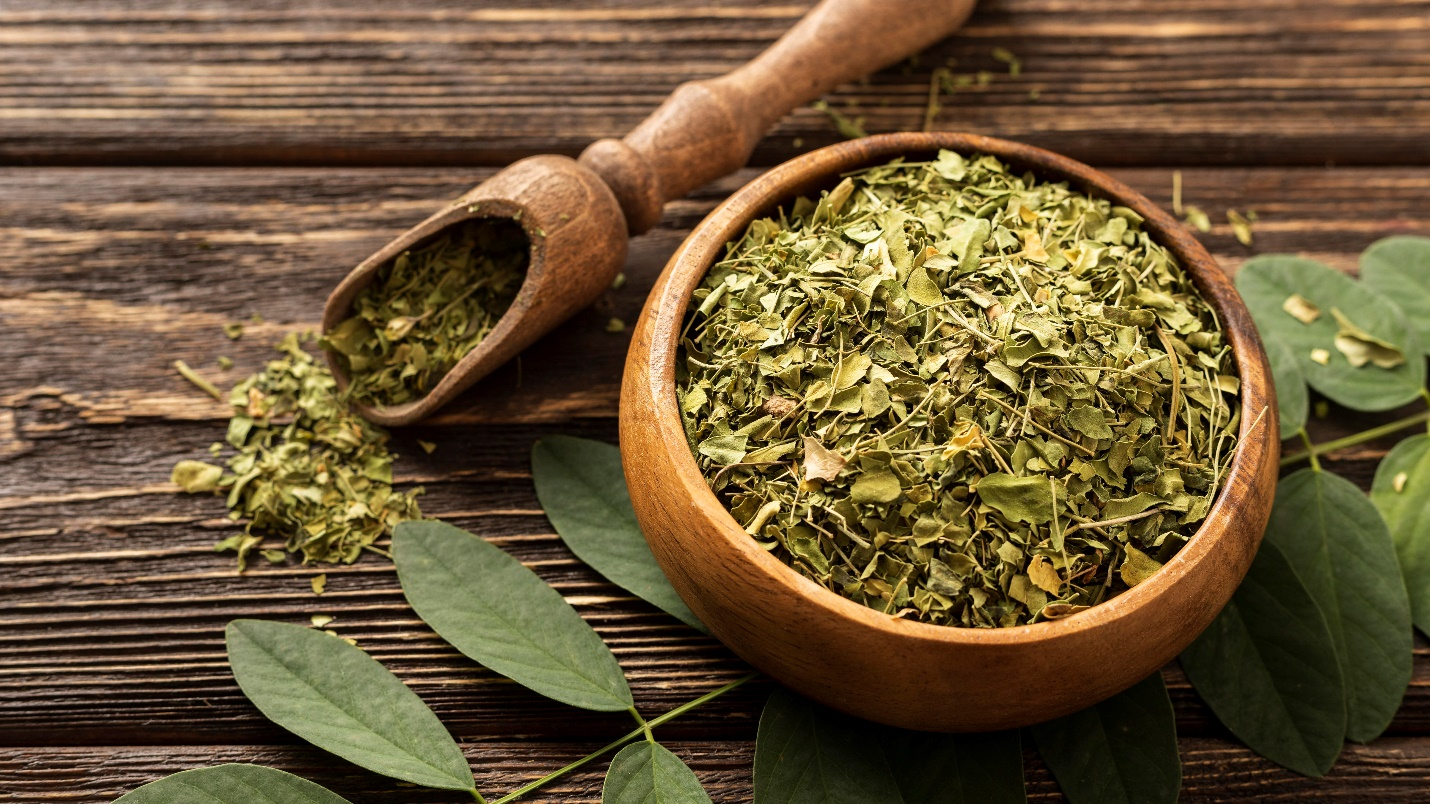India has emerged as a global leader in renewable energy, ranking fourth in installed capacity worldwide as of FY25. Backed by strong government commitment, the country is rapidly expanding clean energy adoption through large-scale projects and policy support. This transition not only contributes to climate goals but also creates significant employment opportunities, particularly in rural regions.
India has already surpassed several of its climate commitments. The country has achieved 100 GW of solar capacity, generates 47% of its power from non-fossil fuel sources, and reduced its emissions intensity by 36%. With vast untapped potential in solar and wind energy, India has set an ambitious target of reaching 500 GW of renewable energy capacity by 2030.
Installed renewable power generation capacity has grown rapidly at a CAGR of 19.02% between FY16 and FY25, reaching 220.1 GW in FY25. Solar energy has been the primary growth driver, with 23.83 GW added in FY25 compared to 15.03 GW in the previous year. Wind energy is also making strong progress, with over 50 GW of installed capacity and a domestic manufacturing base of 18 GW annually. Annual wind capacity additions are set to accelerate, with installations expected to double to 7.1 GW on average over the next two fiscals, compared with 3.4 GW in FY25, driven by government measures to ramp up the pace. The sector is firmly on track toward achieving 100 GW of installed wind capacity by 2030, as highlighted by the Indian Wind Turbine Manufacturers Association (IWTMA).
The momentum is equally evident in power generation. Renewable energy (excluding hydro) produced 29.66 billion units (BU) in June 2025, up from 23.05 BU a year earlier. In the first quarter of FY26 (April-June 2025), renewable sources generated 80.11 BU, a sharp rise from 64.18 BU in the same period the previous year.
Hydropower continues to play a supportive role in the green energy mix. Installed capacity from large hydro projects rose from 35.9 GW in March 2008 to 49.30 GW by June 2025, while small hydro capacity quadrupled to 5.10 GW during the same period.
As India is expected to account for 35% of global energy demand growth over the next two decades, its green transition is being reinforced by strategic investments not only in solar and wind but also in natural gas, LNG, and hydrogen. This integrated approach balances availability, affordability, and sustainability, positioning India as a global powerhouse in clean energy.
The Union Budget for 2025-26 has notably enhanced allocations for the renewable energy sector, with budget estimates for the Ministry of New and Renewable Energy (MNRE) totalling Rs. 256.49 crore (US$ 3.03 billion). This represents a 39% increase compared to last year's initial budget estimates of Rs. 19,100 crore (US$ 2.26 billion).
L&T will construct India’s largest green hydrogen plant at IOCL’s Panipat refinery to support the National Green Hydrogen Mission and decarbonise refinery operations. The facility will run on renewable energy and use high-pressure alkaline electrolysers made by L&T Electrolysers Ltd at its Hazira unit in Gujarat
On August 05, 2025, Hindustan Power has signed a power purchase agreement with Uttar Pradesh Power Corporation Ltd. to set up a 435 MW DC solar power project. The project will supply clean electricity to the state for 25 years, aligning with Uttar Pradesh’s target of achieving 22,000 MW of clean energy capacity by 2026-27.
NLC India Limited has secured a Letter of Award from NTPC for a 450 MW ISTS-connected wind-solar hybrid project under a competitive bidding process. With a 30% minimum CUF and a 25-year PPA, the project enhances NLCIL’s hybrid capacity to 600 MW and supports its 10 GW renewable energy target by 2030.
India's renewable energy sector has attracted significant foreign direct investment (FDI), amounting to Rs. 1,59,959 crore (US$ 21.90 billion) from April 2000 to March 2025.
The share of RE in the country’s total FDI inflows has grown remarkably, from about 1% in FY21 to around 8% in FY25, reflecting the increasing global confidence in India’s clean energy landscape. The US$ 3.4 billion inflow in the first three quarters of FY25 has nearly matched the entire FDI received in FY24, which stood at US$ 3.7 billion.
India and the Netherlands are set to strengthen their clean energy collaboration by establishing a green and digital corridor between Indian ports and the Port of Rotterdam.
Avaada Group announced on April 29, 2025, that it has signed an initial agreement with the Maharashtra government to develop two pumped storage projects in the state, with a combined capacity of 3,600 megawatts (MW). The projects, which include the 2,400 MW Pawana Falyan and the 1,200 MW Sirsala, will require a cumulative investment of Rs. 15,100 crore (US$ 1.77 billion). As stated by the company, these initiatives are expected to create over 3,800 direct employment opportunities.
In February 2025, Emmvee Group, a Bengaluru-based manufacturer of solar photovoltaic panels, announced that it will invest Rs. 15,000 crore (US$ 1.7 billion) to establish a manufacturing facility and generate 10,000 jobs.
State-owned power giant NTPC announced on February 24, 2025, that it has signed preliminary agreements to invest over Rs. 2 lakh crore (US$ 23.6 billion) in a range of renewable energy projects in Madhya Pradesh, including solar, wind, pumped hydro storage, non-fossil fuel-based initiatives, and other carbon-neutral ventures.
India's National Electricity Plan (Transmission) aims to boost inter-regional capacity to 168 GW by 2031-32, adding 191,474 circuit km of transmission lines and 1,274 GVA of transformation capacity. It includes 33.25 GW of HVDC links, cross-border interconnections, and increased private sector participation to enhance grid efficiency.
BPCL plans US$ 1.19 billion (Rs. 10,029 crore) for green energy, targeting 2 GW by 2025, 10 GW by 2035, and 7,000 EV chargers in five years.
As of December 12, 2023, India has installed 72.02 GW of solar power capacity, comprising ground-mounted, rooftop, hybrid, and off-grid systems, with significant growth since 2019-20. Private sector investment drives solar projects, supported by schemes for solar park development.
On September 30, 2024, the Rajasthan government signed an MoU with NTPC Green Energy for 28,500 MW of renewable energy-based projects, as part of the total 31,825 MW of power generation projects worth Rs. 1.6 lakh crore (US$ 19.18 billion). This massive renewable energy investment is aimed at making Rajasthan self-reliant in the energy sector and significantly expanding the state's renewable power capacity.
India's share of renewable energy in total foreign direct investment (FDI) inflows rose from about 1% in FY21 to around 8% in FY25. The renewable energy sector attracted US$ 3.4 billion in FDI in the first three quarters of FY25, nearly matching the total FDI for the entire FY24 at US$ 3.7 billion, reflecting growing global investor interest in India's clean energy transition.
India is set to invest over US$ 360 billion in renewable energy and infrastructure by 2030, with US$ 190 billion to US$ 215 billion needed to achieve 500 GW of renewable capacity. An additional US$ 150 billion to US$ 170 billion will be required for electricity transmission and storage.
According to research by the Council on Energy, Environment and Water's Centre for Energy Finance (CEEW-CEF), India's total installed power generation capacity reached 416 GW in FY23, of which 125 GW (30%) came from renewable energy (RE) and 47 GW (11%) comes from hydro.
Indian companies are outpacing global averages in emissions reporting and reduction, with decarbonisation driving significant financial gains, showcasing immense untapped potential in sustainability and AI-driven innovations.
India is empowering startups and MSMEs to scale up clean energy solutions. With innovation support from the Ministry of New and Renewable Energy, smaller enterprises are being positioned as key drivers of energy transformation through decentralised and efficient technologies.
India added a record 10 GW of solar capacity in Q1 FY24, a nearly 400% year-over-year increase, driven by the commissioning of delayed projects as module prices fell and the ALMM order was suspended, as well as improved grid connectivity to projects previously stalled.
The government is supporting floating solar, canal-top solar, agrivoltaics, and renewable projects in tribal and remote regions. These efforts optimise land use and bring clean energy to under-served areas, driving inclusive and sustainable energy development.
To strengthen grid reliability, the government launched a Rs. 5,400 crore (US$ 616.23 million) Viability Gap Funding scheme for 30 GWh of Battery Energy Storage Systems (BESS). This initiative is expected to attract investments worth Rs. 33,000 crore (US$ 3.77 billion) and support India’s renewable energy integration.
India is set to meet its target of generating half of its total power capacity from non-fossil fuel sources by the end of 2025. As of May 31, 2025, India’s installed capacity stood at 475.59 gigawatts (GW), of which 235.53 GW came from non-fossil sources such as solar, wind, hydro, and nuclear.
The National Green Hydrogen Mission is progressing with a Rs. 19,744 crore outlay. It includes the allocation of 3,000 MW electrolyser capacity and approvals for 8.6 lakh tonnes per annum of green hydrogen production, reinforcing India’s push towards industrial decarbonisation and energy security.
India’s renewable energy sector posted record-breaking growth in the H1 2025, adding 22 gigawatts (GW) of capacity, up 56% YoY, according to data from the Central Electricity Authority. This surge has pushed the country’s total clean energy capacity, including large hydropower and nuclear, above that of fossil fuels for the first time.
Around US$ 2.8 trillion was invested in energy in 2023 globally. More than US$ 1.7 trillion is going to clean energy, including renewable power, nuclear, grids, storage, low-emission fuels, efficiency improvements and end-use renewables and electrification.
Eco Wave Power and Bharat Petroleum signed an MoU at India Energy Week 2025 to develop wave energy in India, estimated at 40,000 MW. The agreement, witnessed by Union Minister for Petroleum and Natural Gas, Mr. Hardeep Singh Puri, aims to integrate wave power into India's renewable energy mix.
Adani Green Energy Ltd. (AGEL) has acquired SB Energy India for US$ 3.5 billion to strengthen its position in the renewable energy sector in India. Reliance Industries has announced an investment of Rs. 75,000 crore (US$ 10.07 billion) in the green energy segment.
Government plans to invest Rs. 9,12,000 crore (US$ 107.89 billion) in power transmission infrastructure by 2032 to boost capacity and support growing electricity demand.
Shirdi is set to become Maharashtra's first solar-powered town, with plans for a solar plant to meet the energy needs of the temple and the entire community, aiming for sustainable power generation and a zero-energy bill for local facilities.
On 23rd February 2024, the Government of India approved amendments to the Electricity (Rights of Consumers) Rules, 2020, aimed at empowering consumers and streamlining processes. Notable changes include faster installation of rooftop solar systems, separate connections for electric vehicle charging, etc.
On February 13, 2024, Prime Minister Mr. Narendra Modi launched PM Surya Ghar Muft Bijli Yojana, offering free rooftop solar electricity to 1 crore households, backed by subsidies and concessional loans.
On December 12, 2023, the Union Minister for New & Renewable Energy and Power reported the installation of 140 MW solar power plants and 2.73 lakh standalone solar pumps under PM-KUSUM, aimed at farmer welfare and environmental sustainability.
The Ministry of New and Renewable Energy (MNRE) has proposed the establishment of a 13,000 MW renewable energy (RE) capacity along with a 12,000 MWh Battery Energy Storage System (BESS) in Ladakh. On October 18, 2023, the Cabinet Committee on Economic Affairs approved the construction of an Inter-State Transmission System (ISTS) to facilitate the power evacuation and grid integration of these RE projects in Ladakh.
India has launched the Mission Innovation CleanTech Exchange, a global initiative that will create a whole network of incubators across member countries to accelerate clean energy innovation. Prime Minister Mr. Narendra Modi pledged to boost India's renewable energy generation capacity to 500 GW and satisfy half of India's energy needs through renewable sources by the year 2030 at the Cop-26 Summit in Glasgow.
The Government of India wants to develop a ‘green city’ in every state of the country, powered by renewable energy. The ‘green city’ will mainstream environment-friendly power through solar rooftop systems on all its houses, solar parks on the city’s outskirts, waste-to-energy plants, and electric mobility-enabled public transport systems.
India is expected to add 32 gigawatts (GW) of renewable capacity in 2025, up from 28 GW in 2024, according to Moody’s-owned Investment Information and Credit Rating Agency (ICRA).
It is expected that by 2040, around 49% of the total electricity will be generated by renewable energy as more efficient batteries will be used to store electricity, which will further cut the solar energy cost by 66% as compared to the current cost. The use of renewables in place of coal will save India Rs. 54,000 crore (US$ 8.43 billion) annually.
India’s renewable energy journey is witnessing unprecedented momentum, with strong policy support, record investments, and rapid capacity expansion across solar, wind, hydro, and green hydrogen. As the nation moves closer to its 2030 target of 500 GW, it is positioning itself as a global clean energy leader. With innovation, strategic collaborations, and large-scale adoption driving the sector, India is set to power its growth sustainably while creating new opportunities for industries, communities, and future generations.
References: Central Electricity Authority, Ministry of New and Renewable Energy, Media Reports, Press Releases














